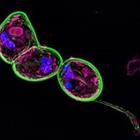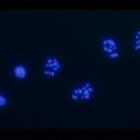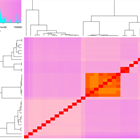Our research focuses on the unicellular, parasitic eukaryote Giardia intestinalis, which is responsible for a gastrointestinal disease affecting hundreds of millions of people worldwide. Since 2004, giardiasis has been included in the WHO's Neglected Diseases Initiative. Treatment-refractory giardiasis cases are increasing in prevalence, indicating the existence of as yet uncovered parasite drug-resistance mechanisms.
The overall aim of our research group is to characterize the peculiar organization of the Giardia cell by genomic, transcriptomic, and proteomic analyses. By applying advanced methods such as gene editing, next-generation sequencing, digital PCR, and various imaging techniques (ExM, FIB/SEM), we study the trophozoite and cyst stages of Giardia. Focus is placed on cell division, encystation, and most importantly, on drug resistance mechanisms and markers. Clinical isolates from cases of treatment-refractory giardiasis have been collected, and our efforts are dedicated toward their characterization.
National and international collaborations are highly valued; we train our students in scientific work, and enthusiasm for this parasite. Located at Charles University's First Faculty of Medicine, our team also participates in teaching parasitology and microbiology. If you are interested in collaborating with us, please don't hesitate to contact us!
Authors of the photos: P. Tůmová and J. Soukup















